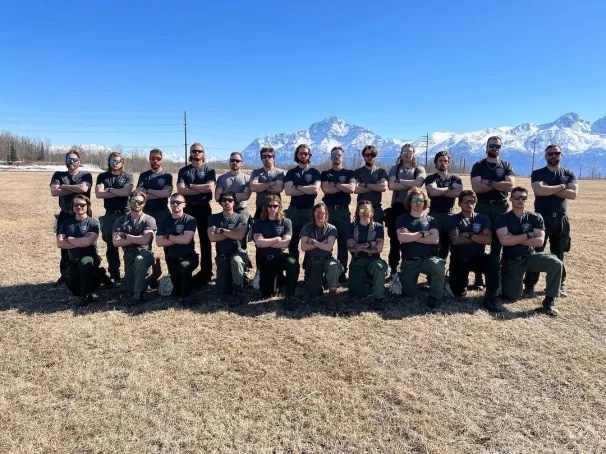Provincial officials in Alberta declared a state of emergency on Saturday when more than 100 wildfires spread out of control in what Premier Danielle Smith has deemed an “unprecedented crisis”. While thousands of residents remain on evacuation alert, at least 29,000 Albertans have been forced from their homes in the north and central regions of the province.
Fire managers in Alberta have placed large resource requests for outside assistance, including an air tanker and hotshot crew from Alaska. The strong intergovernmental agreement known as the Northwest Compact allows the Division of Forestry & Fire Protection to make available resources when conditions in Alaska allow.
With the delayed snowmelt, late spring and recent widespread moisture, DOF has made available Air Tanker 544 and Pioneer Peak Hotshot interagency suppression crew, both based in Palmer. Air Tanker 544 departed for Alberta this morning. Pioneer Peak has extensive experience in managing wildfires and the crew has completed their required 80 hours of pre-season training. The 23 person crew is scheduled to depart tomorrow, Tuesday, May 9 in smokejumper aircraft. “Alberta was a significant contributor to the Alaska response effort last season. Supporting their efforts this spring is an excellent example of not only national but international cooperation it takes to manage fires during extreme conditions,” said DOF’s Chief of Fire and Aviation, Norm McDonald. “As we are just beginning the Alaska fire season with our late break up, we will continue to monitor fire behavior and our fire protection needs to ensure we have the resources available in Alaska to provide an efficient response to protect Alaskan values.”
The deployment of Alaska’s Pioneer Peak Interagency Hotshot crew and Air Tanker 544 to assist Alberta symbolizes the solidarity and cooperation necessary to combat the increasing frequency and intensity of natural disasters while working with fewer resources.
During Alaska’s record setting 3-million-acre wildfire season in 2022, 54 firefighting personnel in Alaska were ordered through the Northwest Compact. Resources came from British Columbia, Alberta, Washington and Oregon. They included incident commanders, helicopter managers and crew members, fixed-wing pilots, and firefighters to staff fire engines and fill several specialist positions. Ten Water-Scooping Fire Bosses or SEATs (Single-Engine Air Tankers) and an air attack plane also responded to the 2022 fires in Alaska as part of the Northwest Compact.






